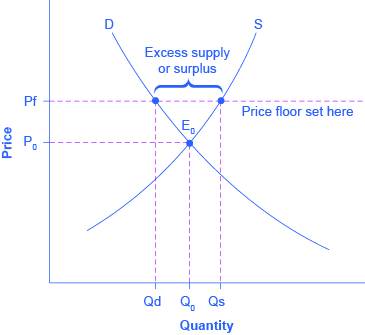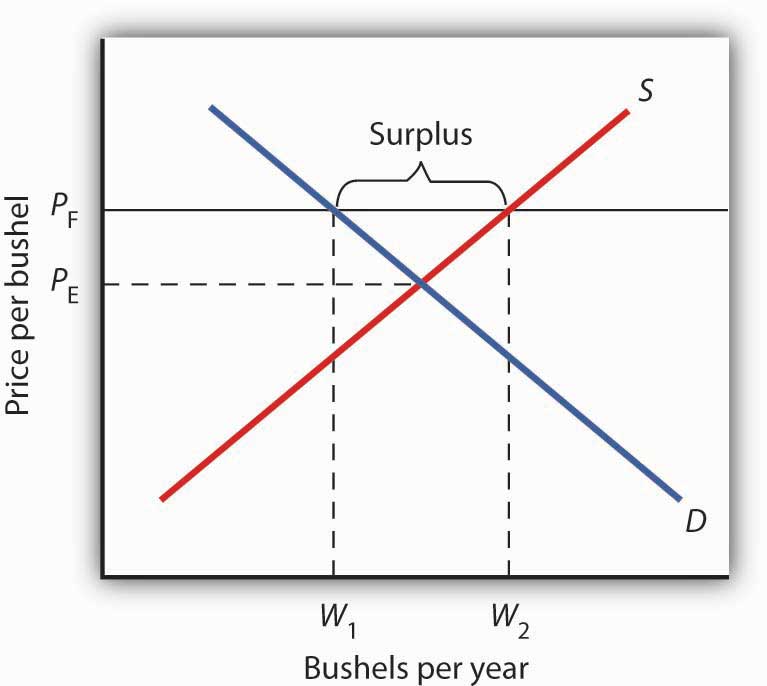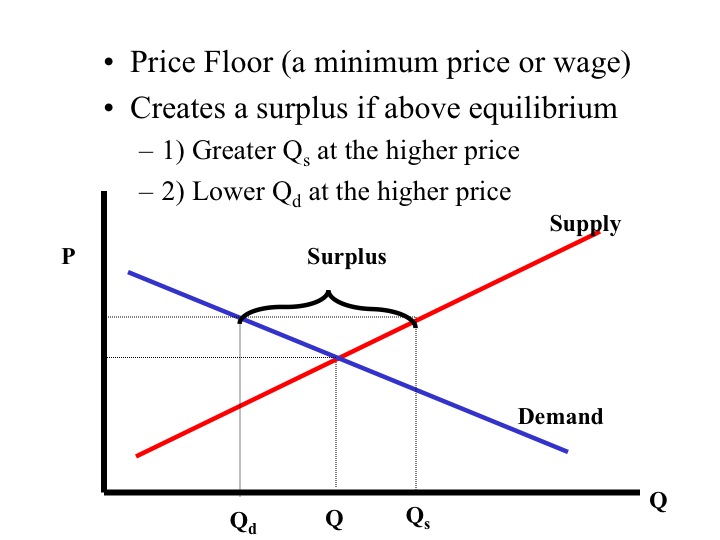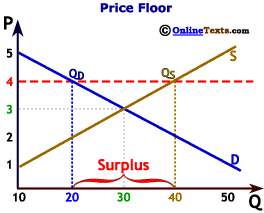On the other hand since the price is higher than what it would be at equilibrium the suppliers producers are willing to supply more than the equilibrium quantity.
Examples supply and demand price floor.
Similarly a typical supply curve is.
In other words they do not change the equilibrium.
It tends to create a market surplus because the quantity supplied at the price floor is higher than the quantity demanded.
Draw demand and supply curves for unskilled labor.
Minimum wage and price floors.
The result of the price floor is that the quantity supplied qs exceeds the quantity demanded qd.
The horizontal axis will show the quantity of unskilled labor per period and the vertical axis will show the hourly wage rate for unskilled workers which is the price of unskilled labor.
A price floor must be higher than the equilibrium price in order to be effective.
The demanders will purchase the quantity where the quantity demanded is equal to the price floor or where the demand curve intersects the price floor line.
A price ceiling keeps a price from rising above a certain level the ceiling while a price floor keeps a price from falling below a given level the floor.
Remember changes in price do not cause demand or supply to change.
A minimum wage law is another example of a price floor.
Taxes and perfectly elastic demand.
Taxation and dead weight loss.
However a price floor set at pf holds the price above e 0 and prevents it from falling.
Governments put in place price floors in markets with inelastic demand inelastic demand inelastic demand is when the buyer s demand does not change as much as the price changes.
They simply set a price that limits what can be legally charged in the market.
A price floor example.
A price floor is the other common government policy to manipulate supply and demand opposite from a price ceiling.
A minimum wage law is the most common and easily recognizable example of a price floor.
Example breaking down tax incidence.
A price floor is a government or group imposed price control or limit on how low a price can be charged for a product good commodity or service.
Do price ceilings and floors change demand or supply.
When price increases by 20 and demand decreases by only 1 demand is said to be inelastic.
The next section discusses price floors.
Taxes and perfectly inelastic demand.
And very low prices naturally.
A price floor means that the price of a good or service cannot go lower than the regulated floor.
A price floor is a minimum price enforced in a market by a government or self imposed by a group.
The intersection of demand d and supply s would be at the equilibrium point e 0.
Demand curve is generally downward sloping which means that the quantity demanded increase when the price decreases and vice versa.
The effect of government interventions on surplus.
Neither price ceilings nor price floors cause demand or supply to change.
How price controls reallocate surplus.
The equilibrium price commonly called the market price is the price where economic forces such as supply and demand are balanced and in the absence of external.










